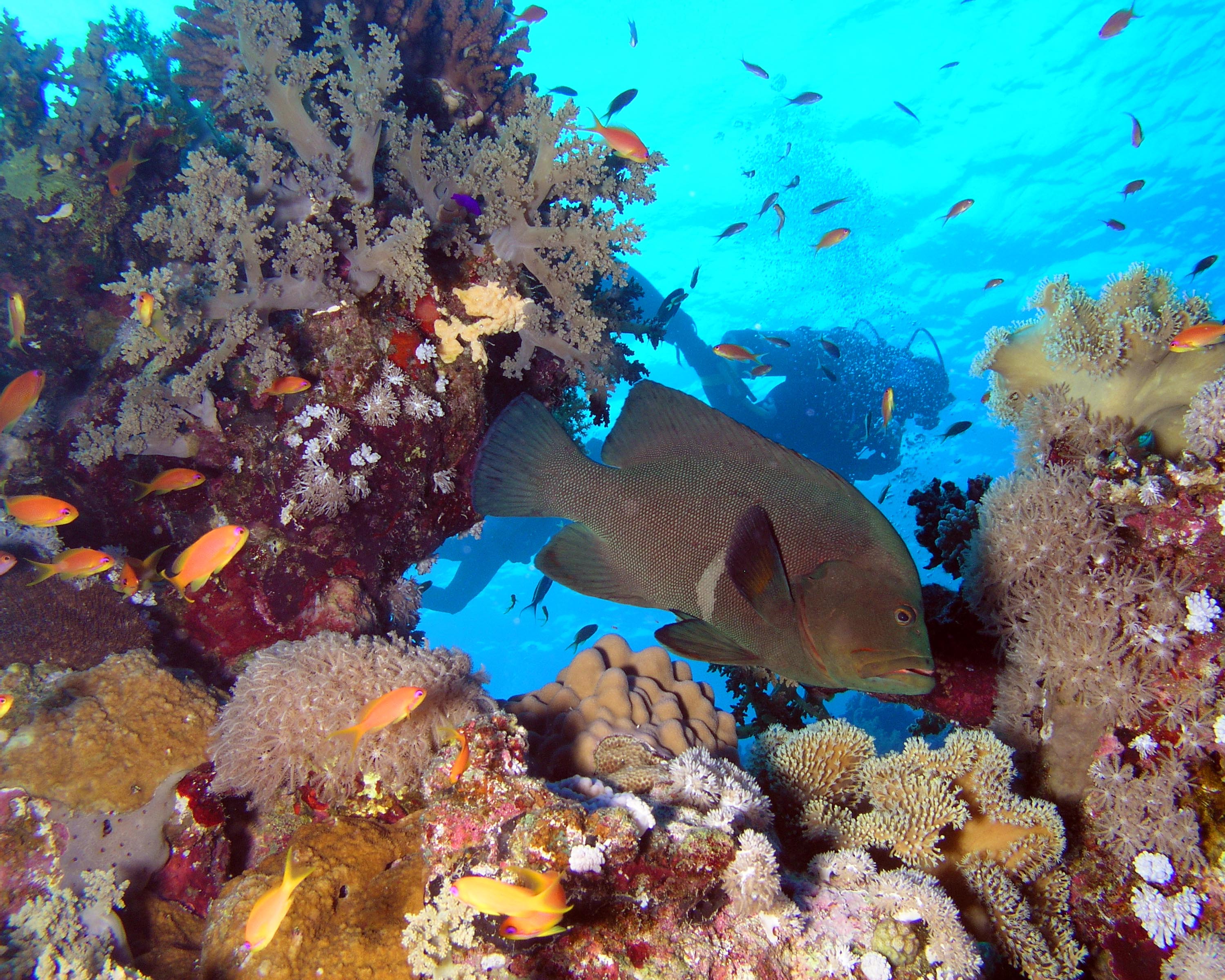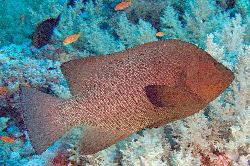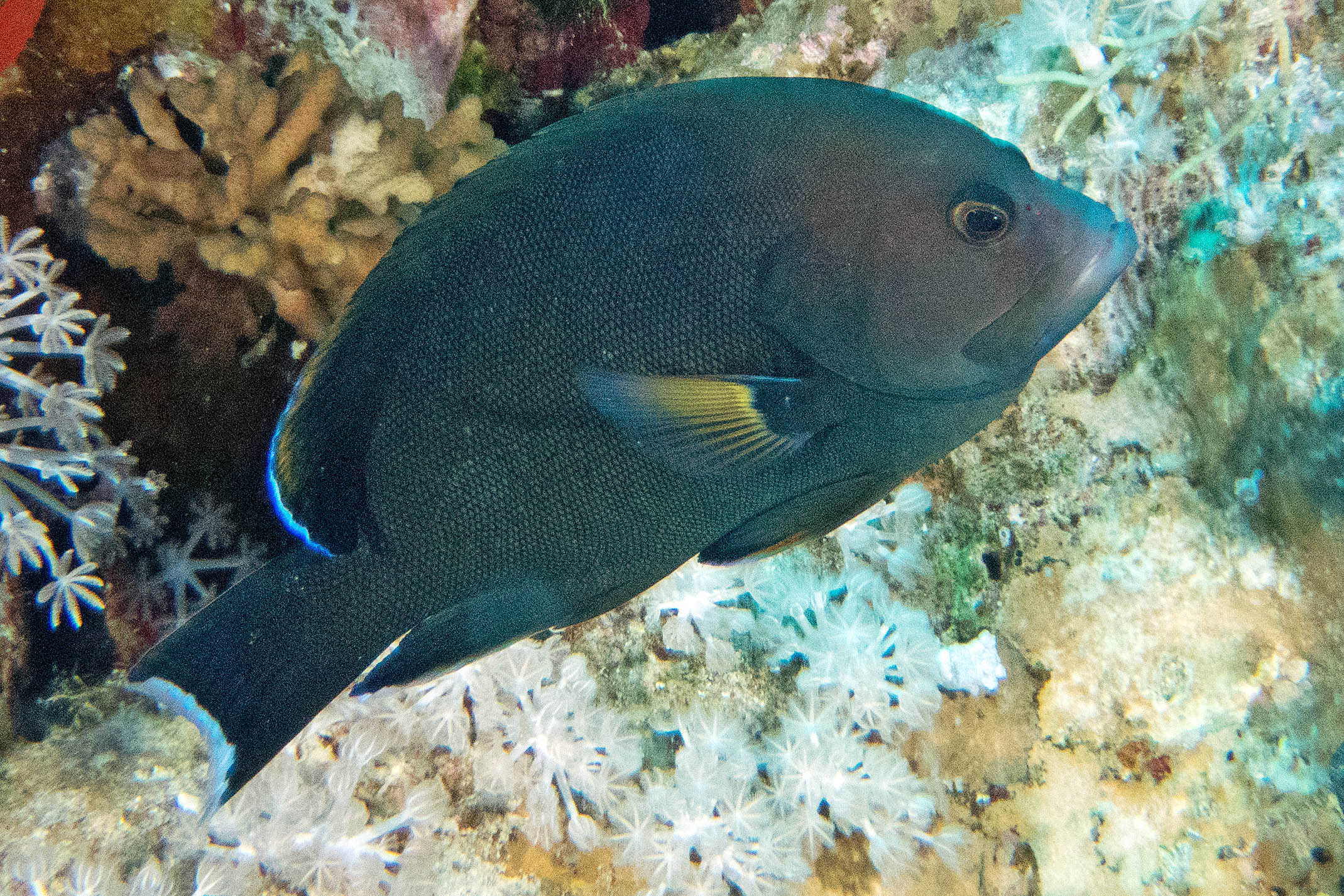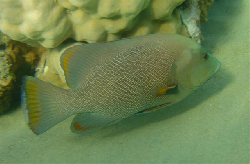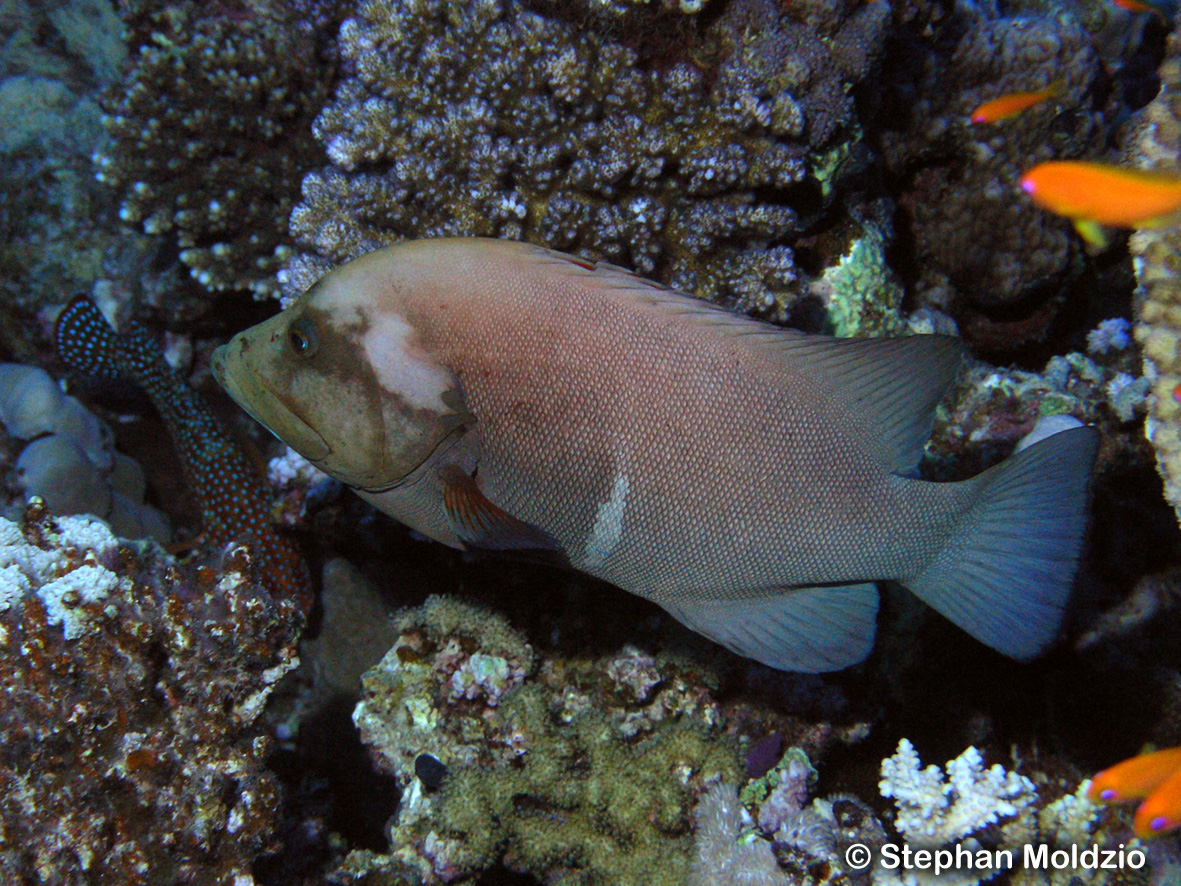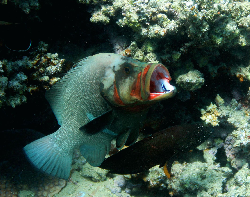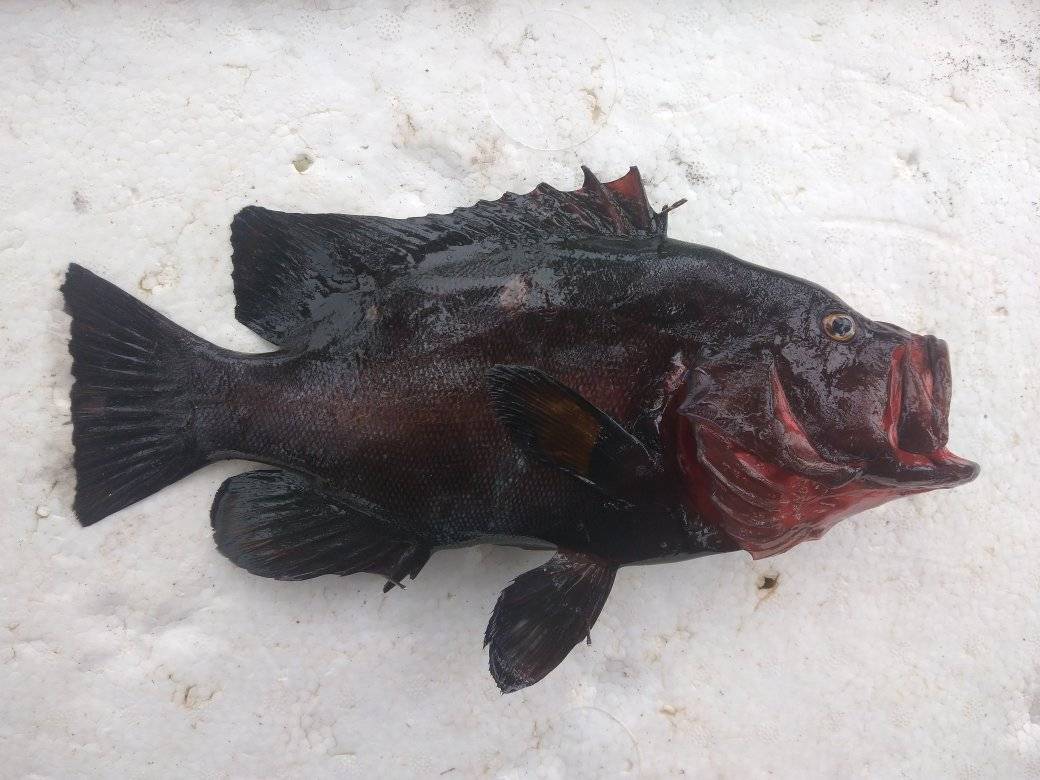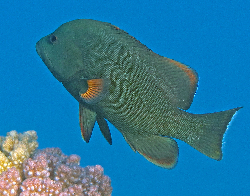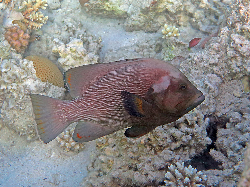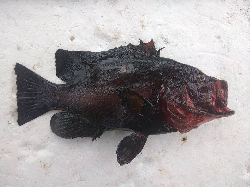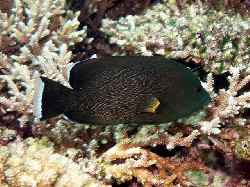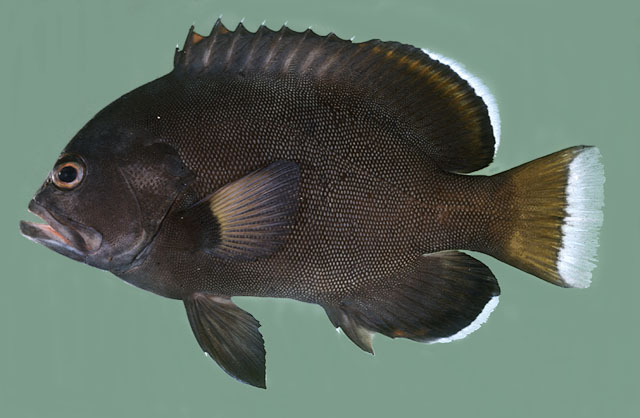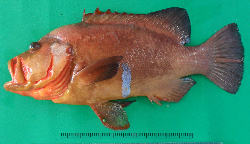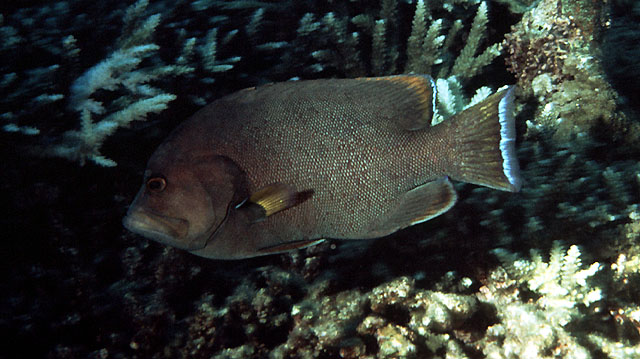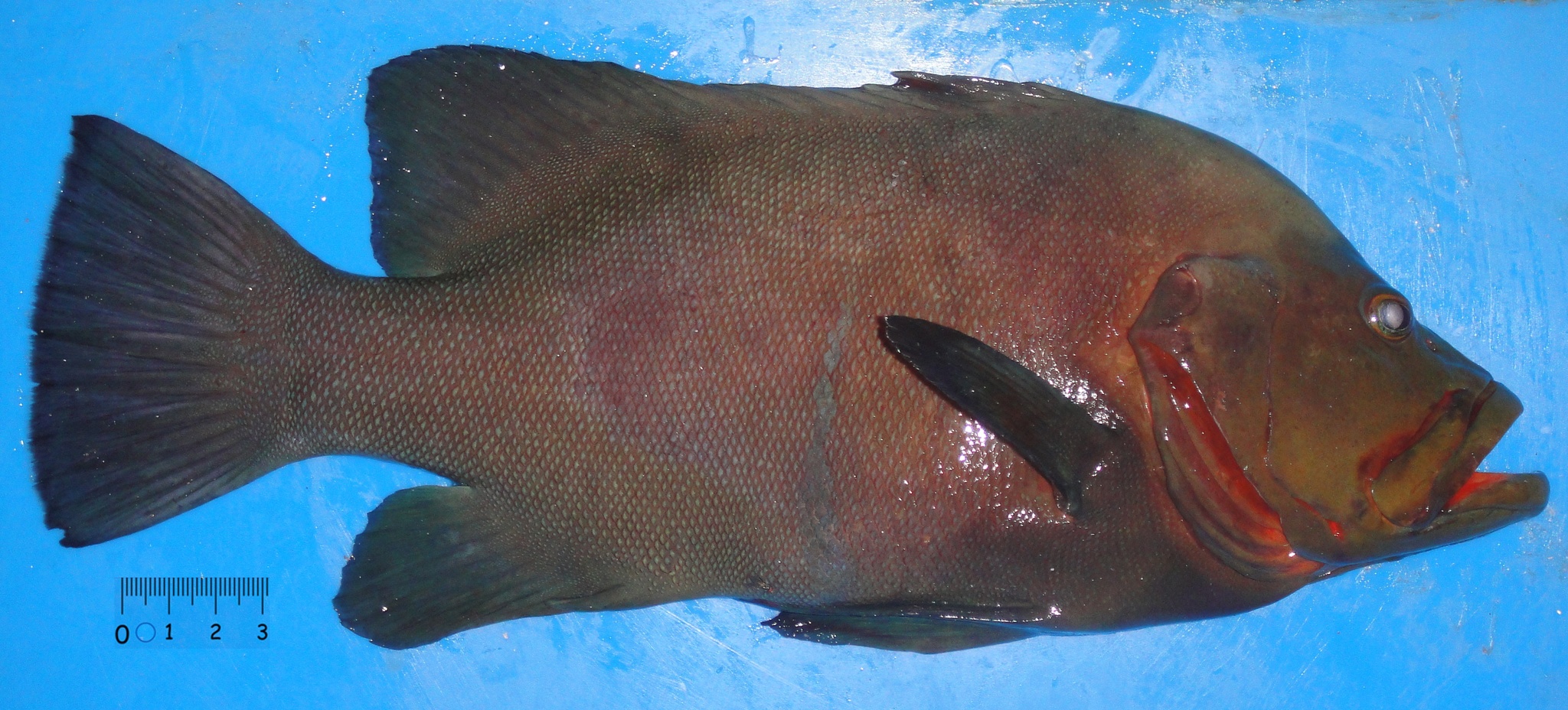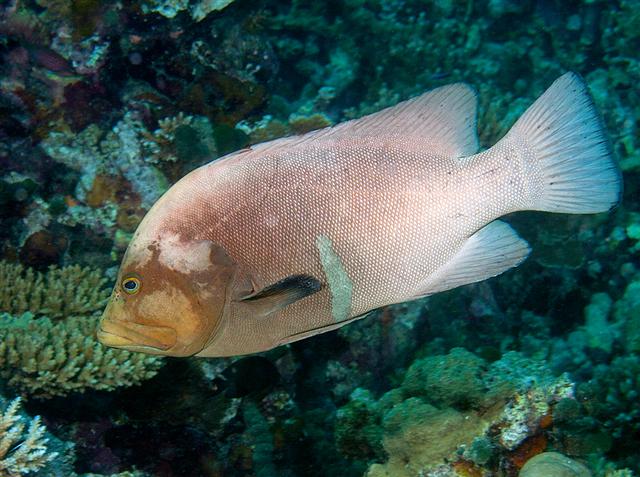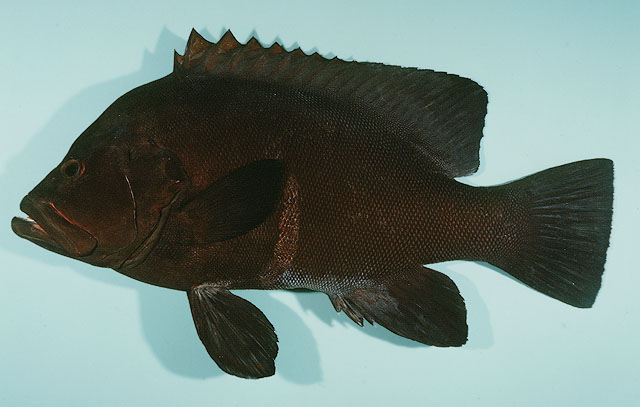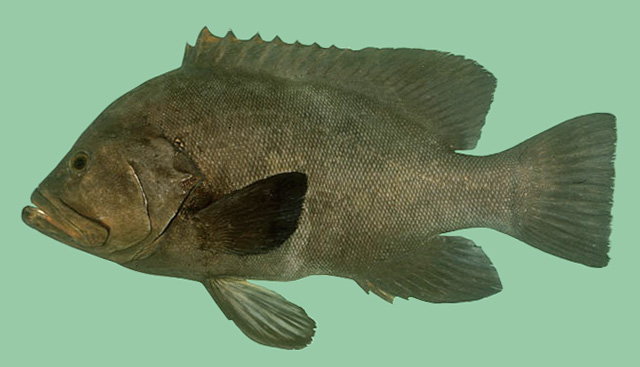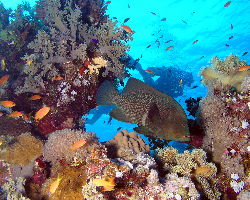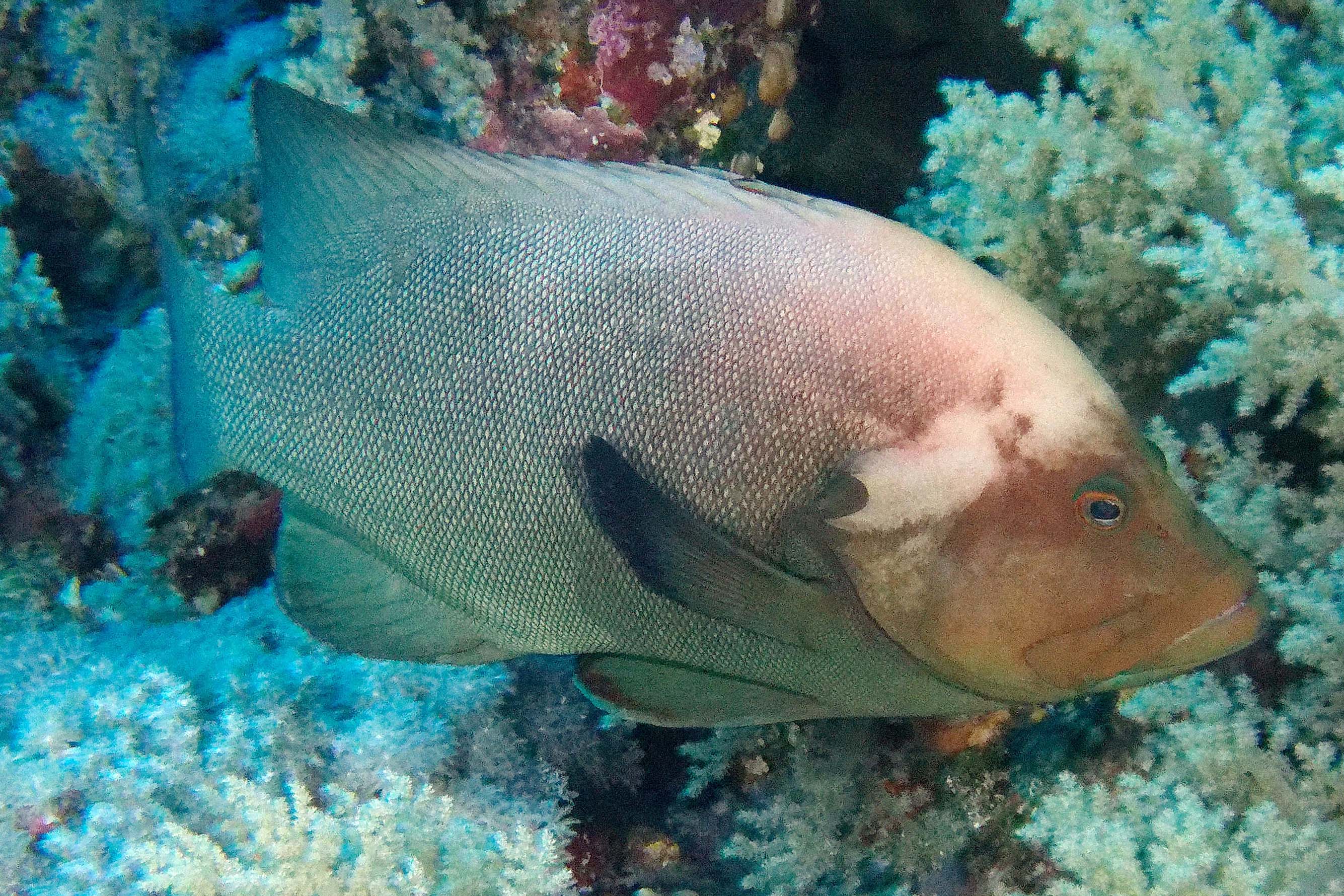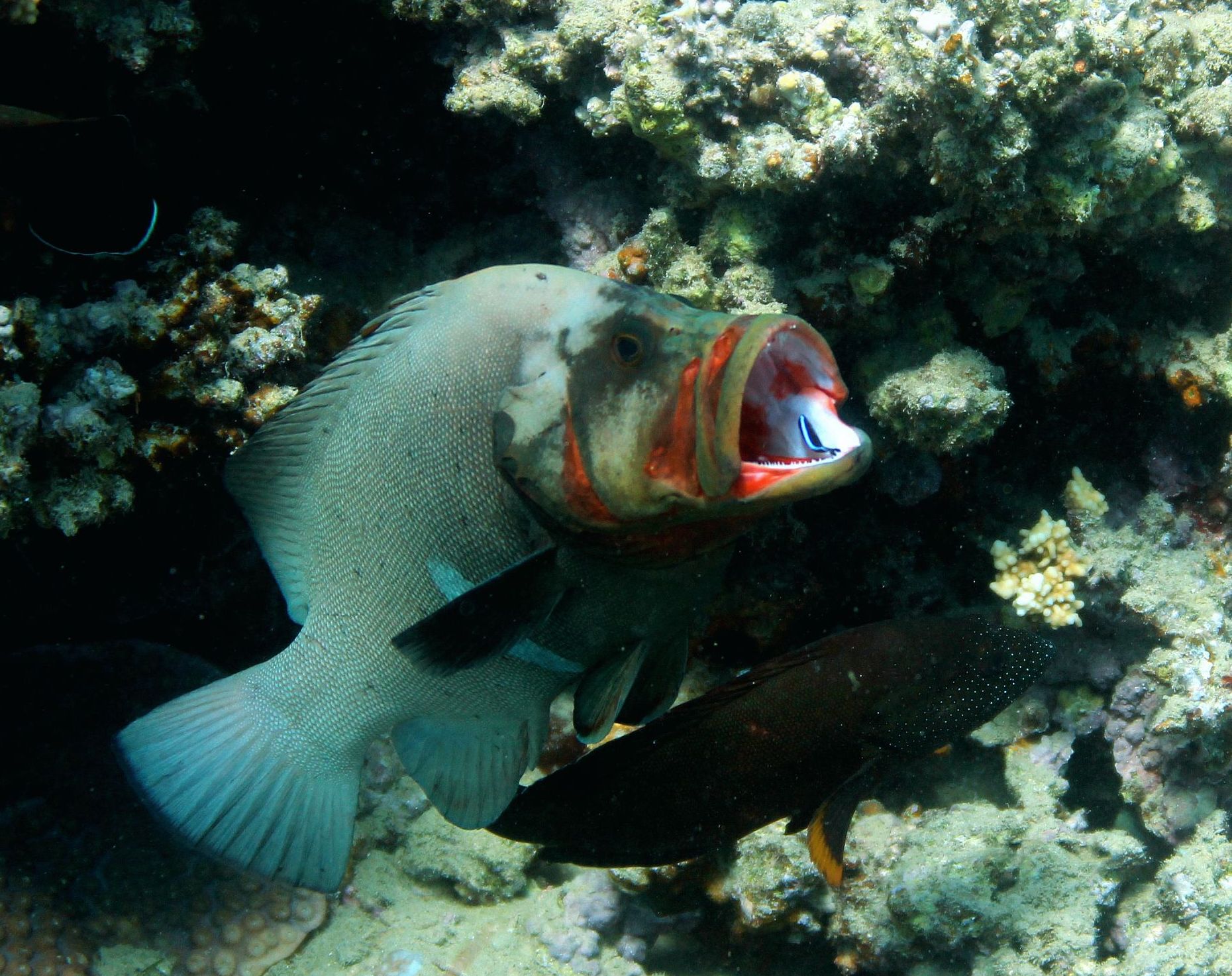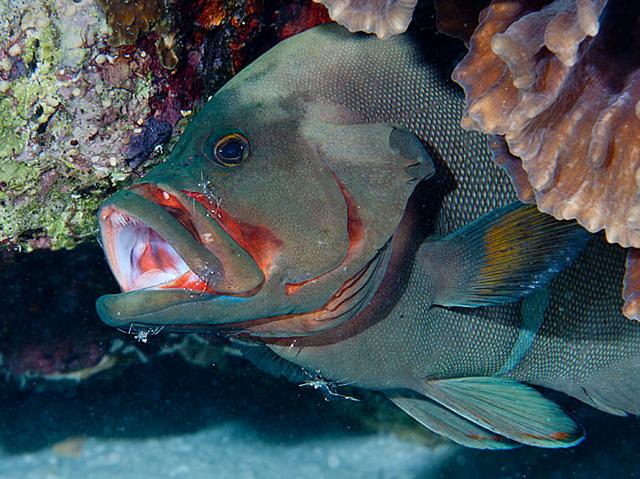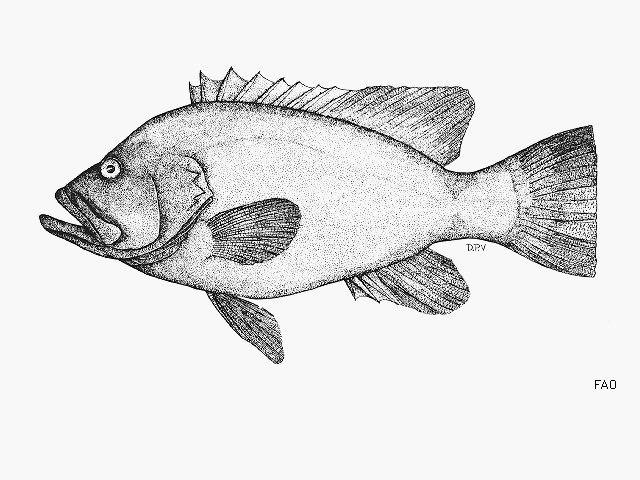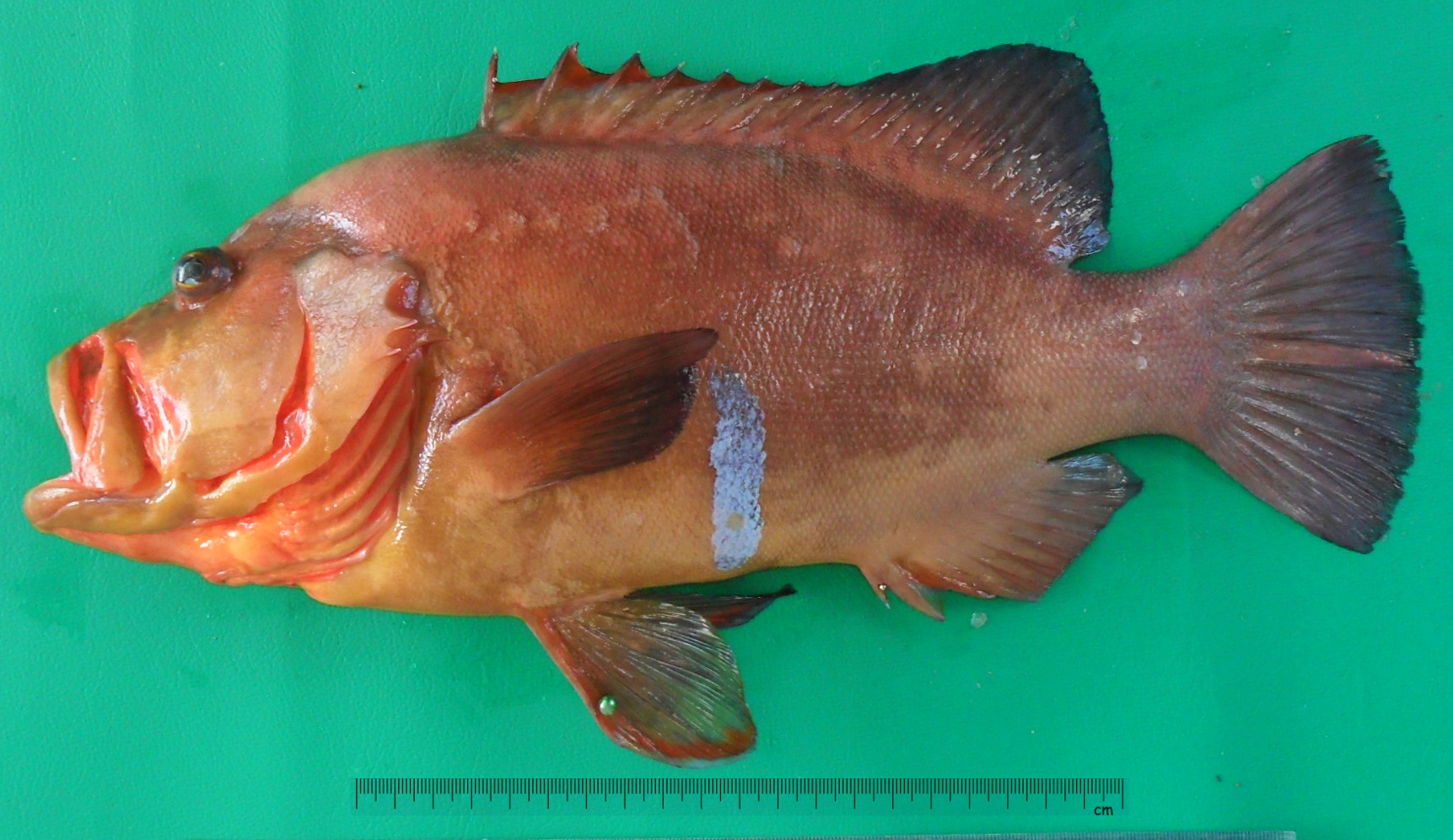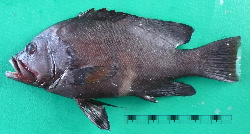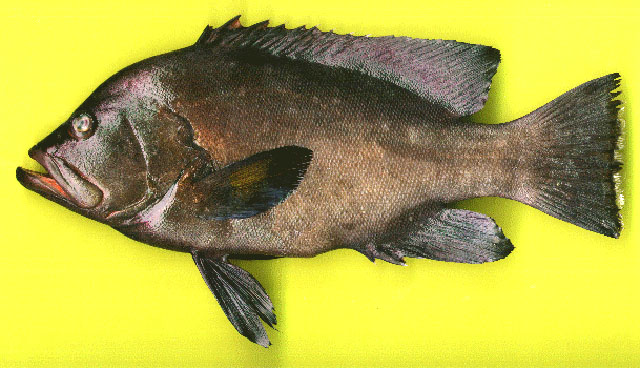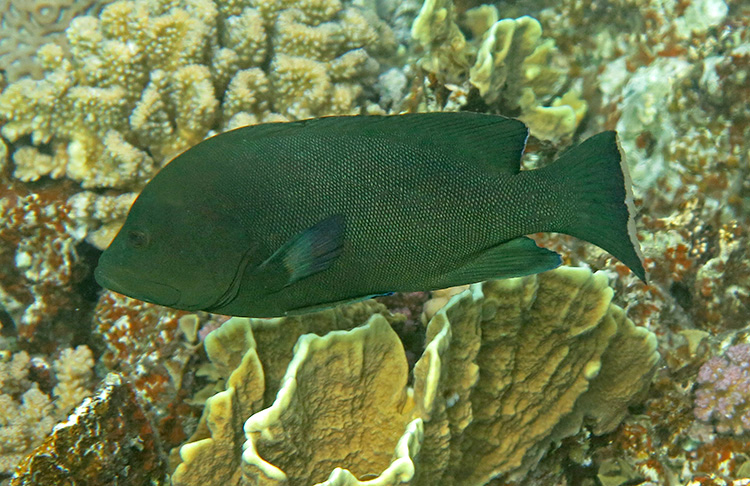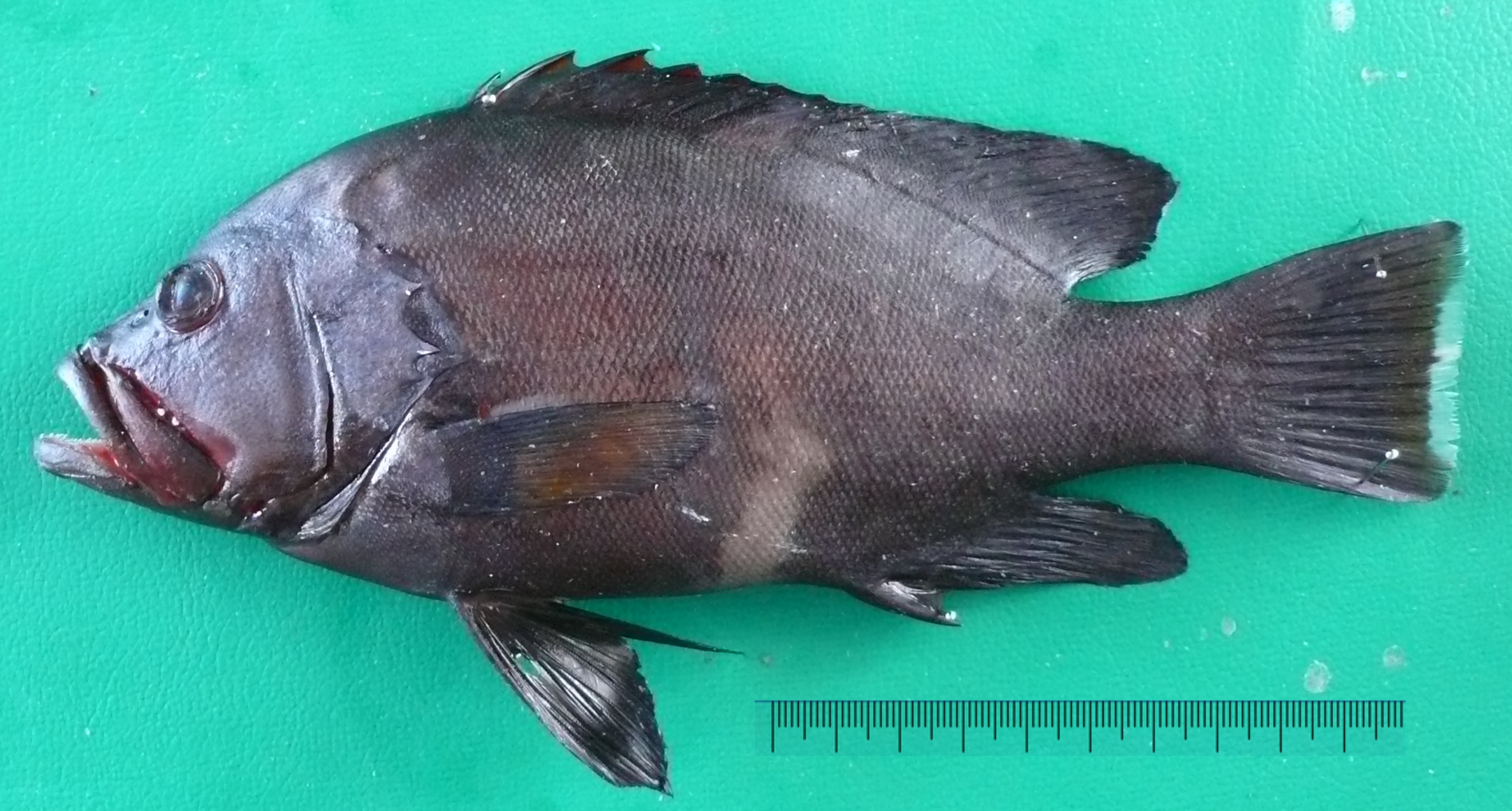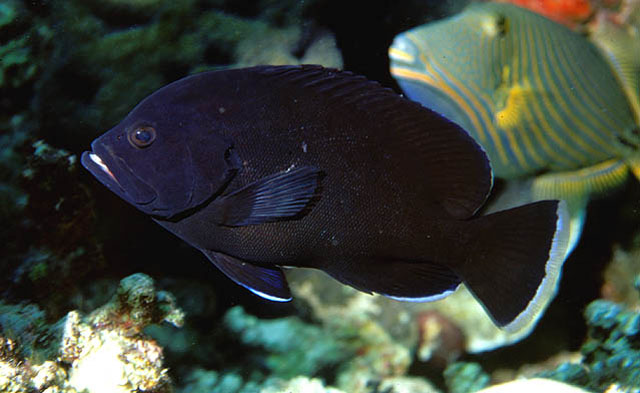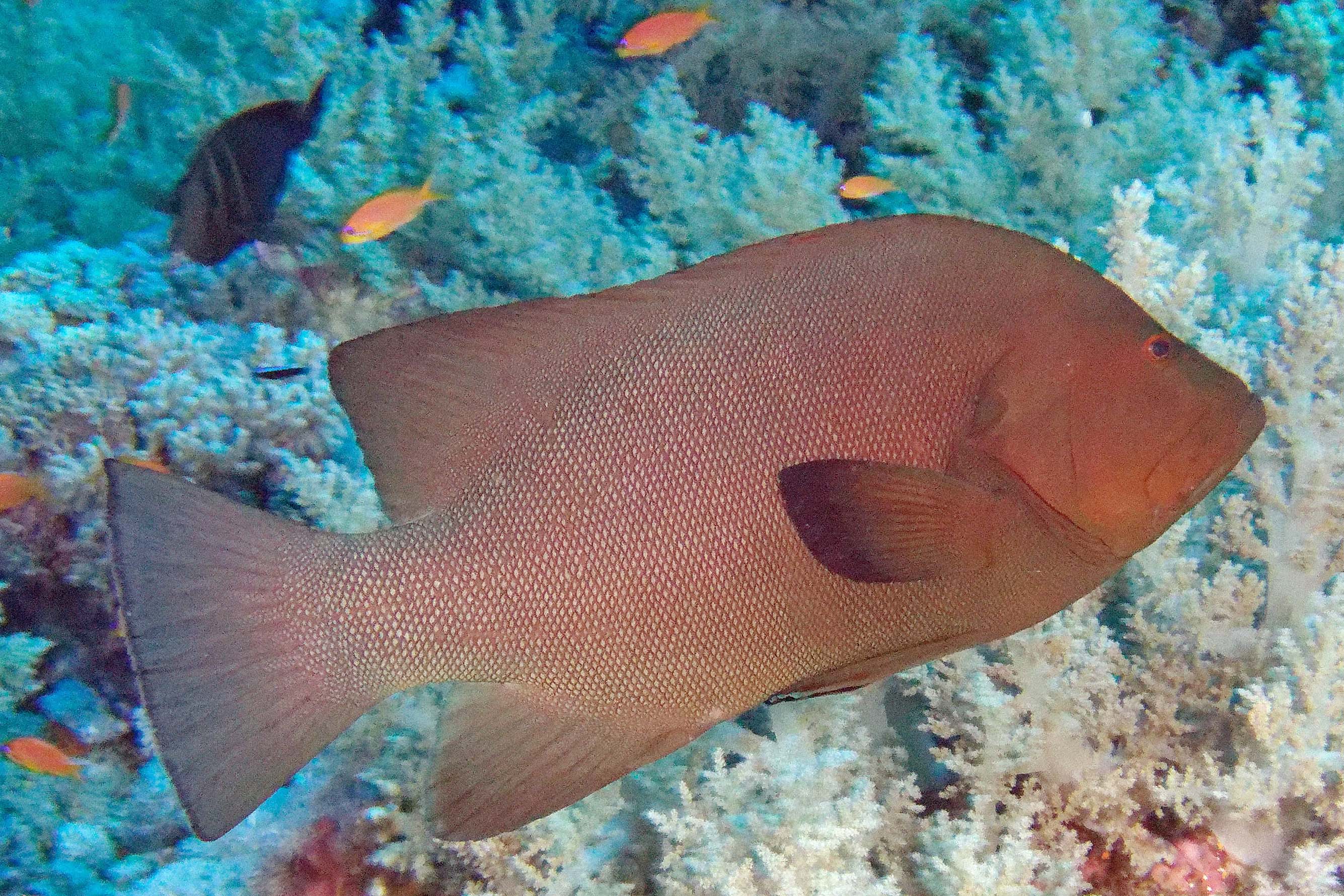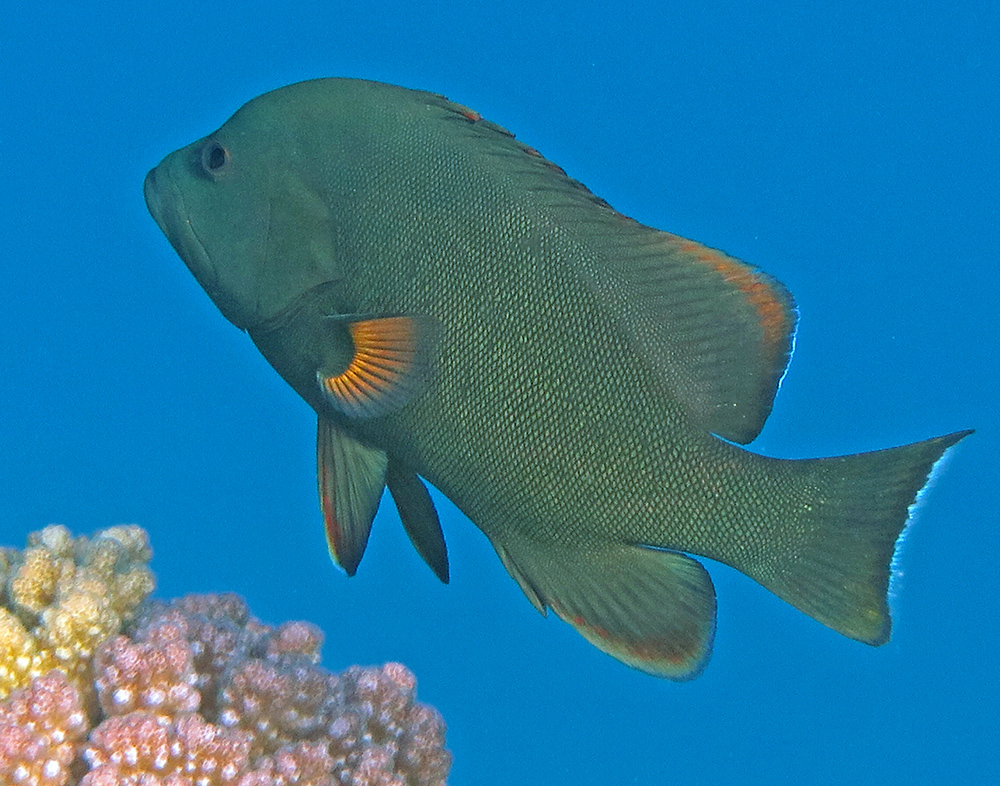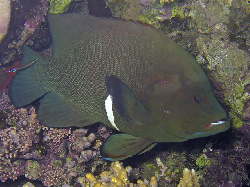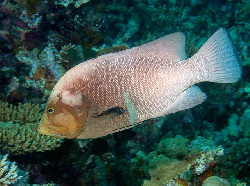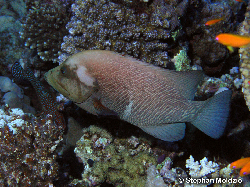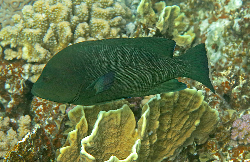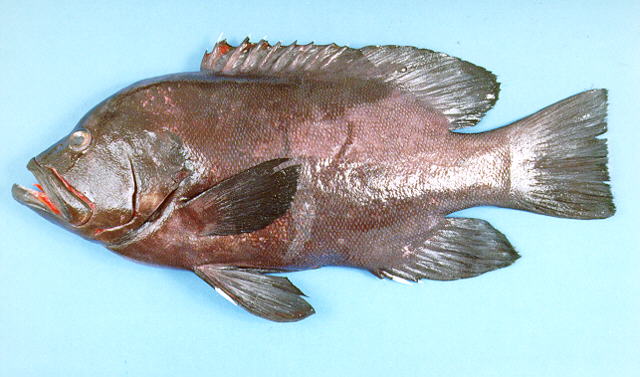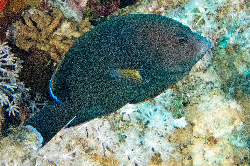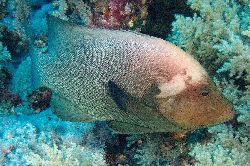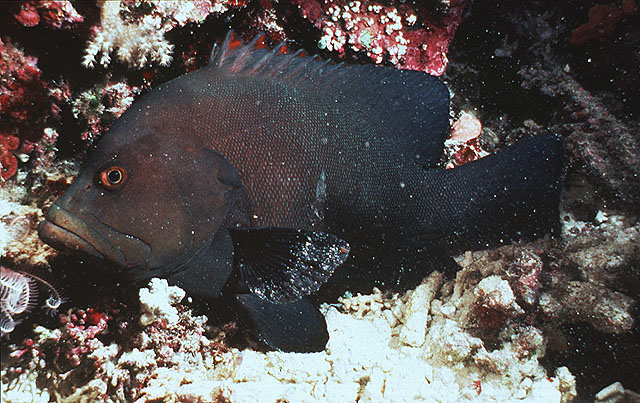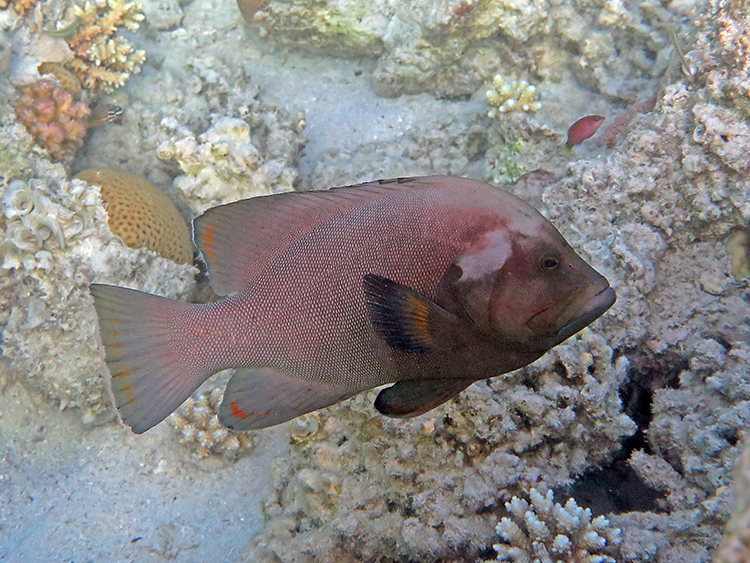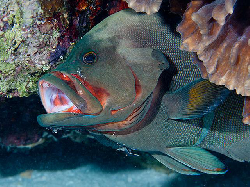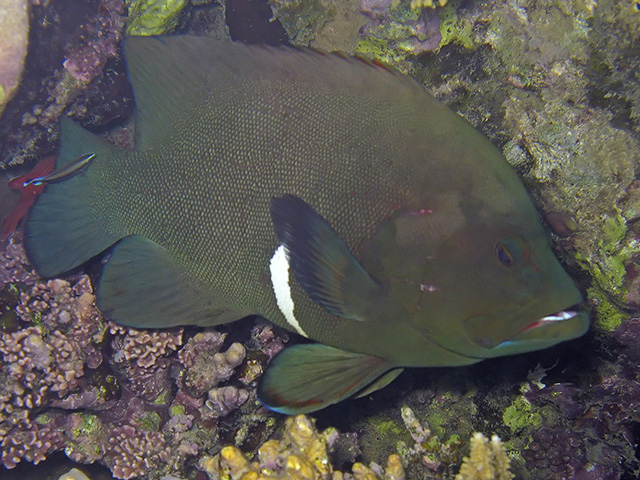Aethaloperca rogaa (Fabricius, 1775)
Description
Dorsal spines (total): 9; Dorsal soft rays (total): 17 - 18; Anal spines: 3; Anal soft rays: 8 - 9. This species is distinguished by the following characters: deep and compressed body with greatest depth 2.1-2.4 in SL; dorsal head profile steep, straight, or slightly concave along snout and distinctly convex from eye to dorsal fin; longitudinal scale series 94-104; gill rakers 8-11 + 15-17; in adults the middle dorsal and anal-fin rays are elongated, giving these fins an angular profile, with the rear margin almost vertical; caudal fin truncate, 8 branched rays in upper lobe and 7 in lower lobe; pectoral fins asymmetric, 17-19 rays. Colour of body dark brown to black, occasionally with an orange cast, usually with a pale vertical bar on side of abdomen; inside of mouth, gill cavity and upper jaw membranes reddish orange; juveniles with a broad white posterior margin on caudal fin and a narrow white margin on soft dorsal fin (Ref 5222).
Common Names
No common names available.
Taxonomic Hierarchy
Kingdom: Animalia
Phylum: Chordata
Class: Teleostei
Order: Perciformes/Serranoidei
Family: Epinephelidae
Genus: Aethaloperca
Species: Aethaloperca rogaa (Fabricius, 1775)
Climate Zone
Location
Biology
Adults are found in coastal reefs and lagoons, often on silty habitat (Ref. 48635), in or near caves and holes in the reef. They feed mainly on small fishes (including Pempheris sp.), also on stomatopods (Pseudosquilla sp.) (Ref. 6448); and crustaceans (Ref. 37816). Preliminary data indicate that mature individuals spawn at any time of the year and mature (females?) at about 35 cm SL (Ref. 6448). Small juveniles mimic Centropyge vrolikii (Ref. 8631), and C. nox until they outgrow their model in size (Ref. 48635). Taken as part of the live reef food fish trade centered in China and In Hong Kong and are occasionally found in markets (Ref. 89707). They are caught with hook-and-line, spear, and probably in traps (Ref. 39231).
Habitat
associated
